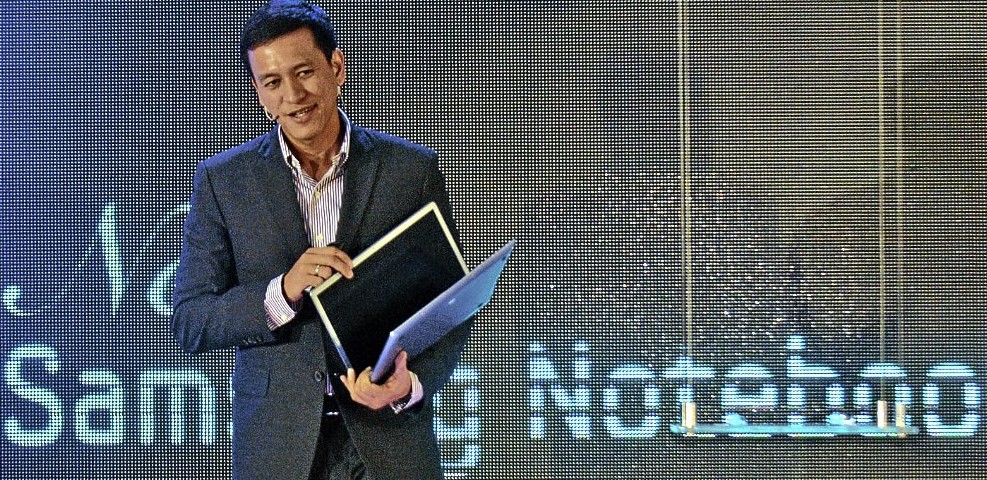The Peninsula Manila’s Rigodon Ballroom in Makati was abuzz with excitement hours before the launch of Samsung’s Series 9, touted as the thinnest (14.9 mm) and lightest (1.58 kg) 15-inch notebook in its category.
The excitement was understandable. Just days before, Apple introduced its latest MacBook Pro, which is supposedly its lightest and thinnest MacBook Pro at 4.4 pounds and 17-mm thick.
But Eric Sulit, Samsung’s business unit director for IT, said the Korean brand has outdone Apple. “Ours is definitely thinner and lighter than theirs,” he said.
In addition, Samsung is selling its new product at an introductory price of P76,900.
Sulit earlier showed pie charts of local sales of IT products.
Based on his report, Samsung is the undisputed leader in both smartphone and PC categories in the Philippines. It achieved its dominance in just two years.
JAMES Kwon, KC Park, Alex Vergara, Dr. Vicki Belo, Celso Villegas and Eric Sulit during launch of Samsung’s newest slim laptops at Peninsula Manila’s Rigodon Ballroom
“Everybody was surprised,” Sulit said. “Our competitors and dealers didn’t know we would grow that fast.”
He attributes Samsung’s success to its dealers who push the brand because it offers “superior” products.
“Our dealers and customers attest to the superiority of our products in terms of quality,” said Sulit. “The main reason for this is we have our own factory. Whereas our competitors subcontract and source their components from the cheapest vendors, we build our own computers in China. Samsung also builds its own components.”
SAMSUNG’S IT business adviser James Kwon, KC Park and Samsung’s business unit director for IT Eric Sulit lead in launching Samsung’s latest gadgets. PHOTOS BY JIM GUIAO PUNZALAN
For those on a tighter budget, particularly students and self-employed professionals, the brand offers the Samsung 13-inch Series 5 Slim. At P29,900 a unit, it’s a cheaper and more handy alternative to most laptops on the market. Unlike the Series 9, which comes initially in matte silver, the Series 5 is in hot pink and mocha brown.
The small but powerful Series 5 runs on AMD’s low voltage A6 CPU, which enables it to marry “performance with great graphics featuring 7660G discrete class graphics.”
Apart from the quality of its products, Samsung hinges its future success on the power of “convergence,” a win-win development for the brand and its growing market. Convergence refers to the way devices work together seamlessly to raise the value and functionality of these devices as they work in one “ecosystem.”
To illustrate its point, Samsung set up two display stations consisting of two monitors connected to gadgets—from laptops to smartphones, tablets to digital cameras, desktops to printers.
(Sulit said he and his team were unable to do away with wires because the National Telecommunications Commission had yet to approve the brand’s wireless version of similar product lines.)
SAMSUNG presales consultant Grace Corre demonstrates the convergence features of Samsung’s newest digital products.
“We call it convergence because it seamlessly connects everyday IT products like the monitor and printer with your smartphone, tablet and PC,” said Sulit. “These products are valuable in themselves, but because of convergence, their value and functionality have increased tremendously.”
The best part about the system is its compatibility with most digital products produced by other brands. Samsung is that secure, it has no problem selling a system that can easily interface with its rivals.
Sulit summarizes this strength—“If you look at the products individually, there are a lot of specific features that make them more superior to those offered by our competitors. You end up getting more out of your investment.”
